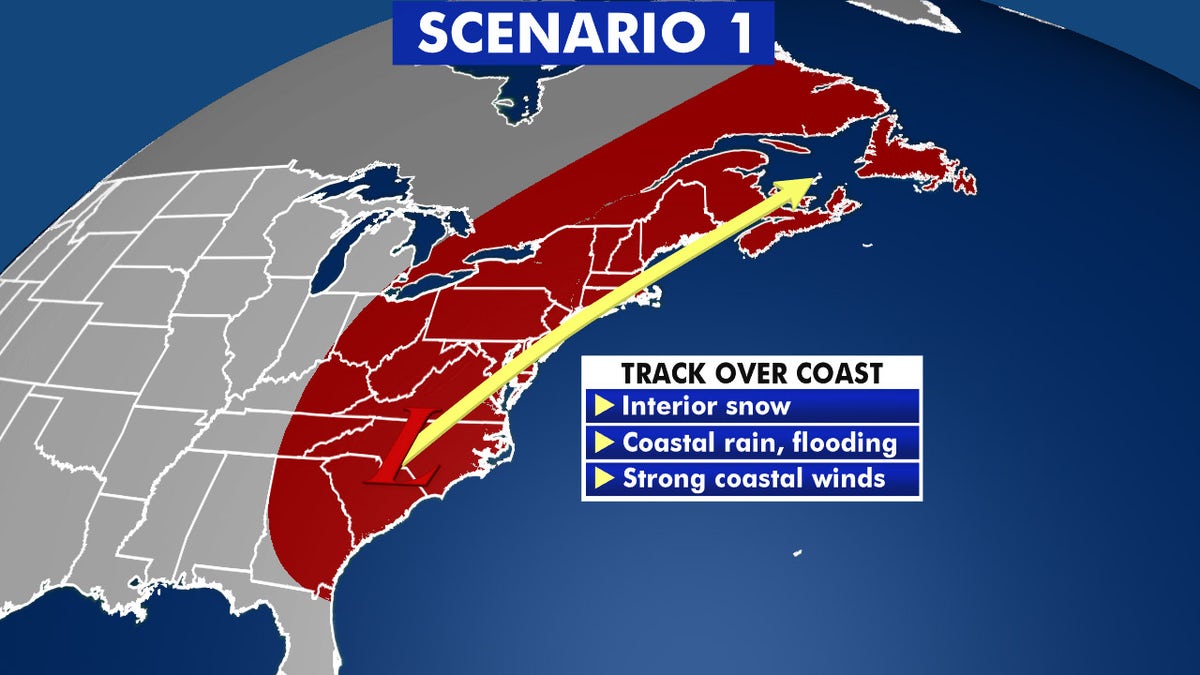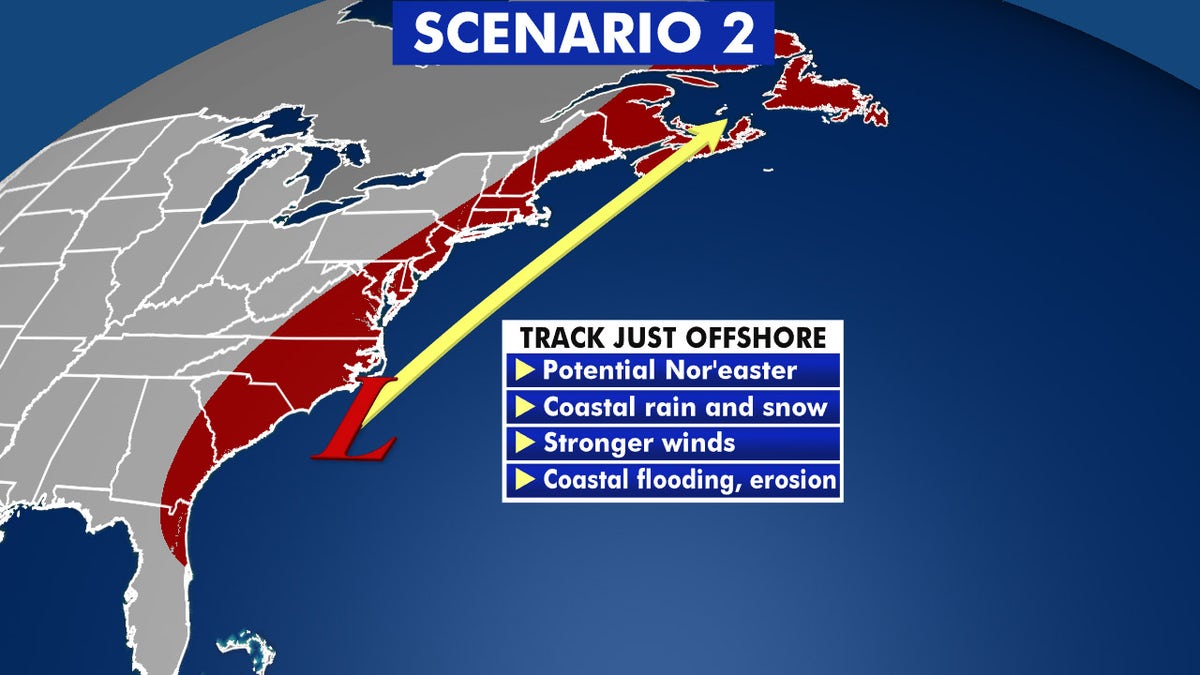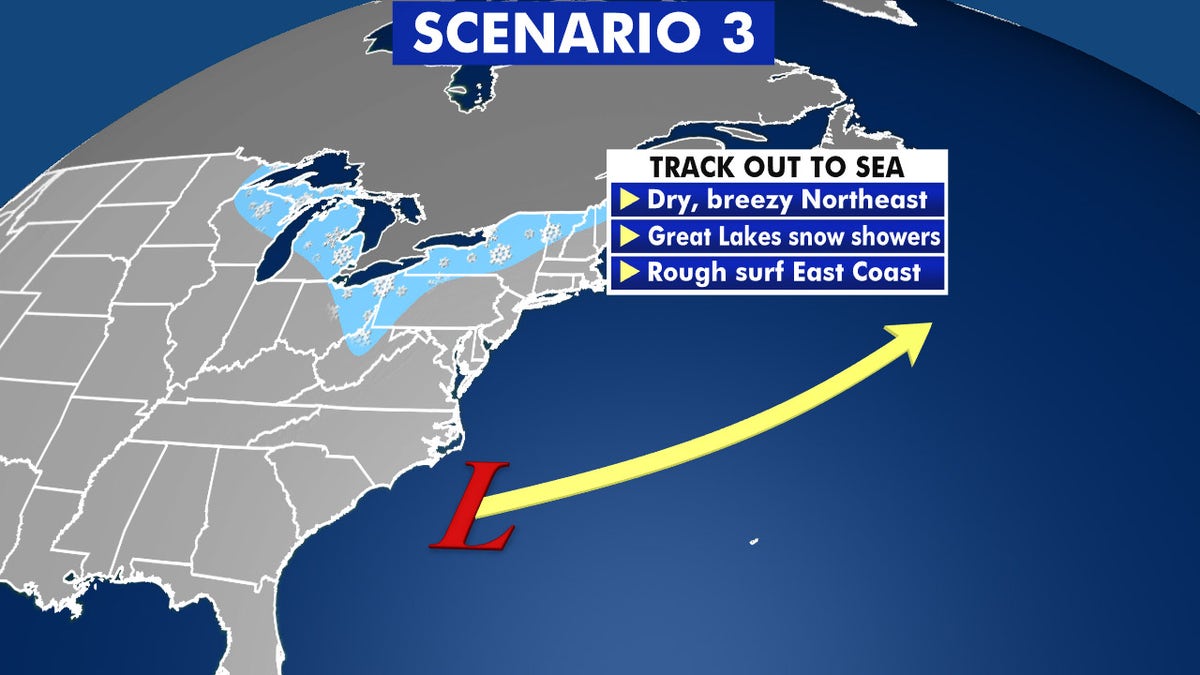Will a nor'easter bring snow? How different storm tracks impact the Northeast
What type of nor’easter could you see in your area? Here are the three main types.
When one of the more infamous winter storms strike, there are a few ways to figure out if you'll get just rain or heavy snow.
Several factors determine precipitation type from nor’easters, including strength and cold air. But one of the most important components is exactly where the coastal low tracks in relation to the East Coast.
A nor'easter is a strong low-pressure system that affects the Mid-Atlantic, Northeast, and New England. Well-developed nor'easters are notorious for producing heavy snow, rain, wind, coastal flooding, and very rough surf.
LIGHTNING SAFETY: WHAT YOU NEED TO KNOW
The name comes from the continuously strong northeasterly winds that precede the nor'easter.
Here are the three main scenarios for nor'easters when they impact the East Coast.
Scenario 1
When the center of low-pressure tracks just inland, the storm draws milder air from the Atlantic Ocean inland as well. This scenario usually will produce mainly rain near the coast, with snow farther inland only if there is enough cold air in place.

When Nor'Easters tend to track over the coast, they bring snow to the interior Northeast while the coast sees rain, coastal flooding, and strong winds. (Fox News)
Near the coast, there will be rain, wind, coastal flooding, and some often travel delays.
Scenario 2
This just-offshore track brings monster, full-blown nor'easters, especially when enough cold air is involved and deep strengthening occurs. Snow can be measured in feet, especially along the Interstate 95 corridor if the atmosphere is cold enough.

Nor'eaters that track just off the coast can bring heavy snow to the major cities along the Interstate 95 corridor. (Fox News)
If temperatures are warmer, you'll often hear about a rain-snow line, and snow changing to rain, then back to snow sometimes.
LAKE EFFECT SNOW: HERE'S HOW IT IMPACTS THE GREAT LAKES
Just a few miles east or west can mean the difference between 2 feet of snow, or a few inches and mostly rain.
Prolonged northeasterly winds also bring a significant coastal flooding threat and beach erosion.
Scenario 3

When nor'easters track out to sea, the region mostly sees breezy conditions, rough surf, and snow showers near the Great Lakes. (Fox News)
When the coastal low forms off the Mid-Atlantic or Carolinas, then tracks out to sea instead of hugging the coast, impacts for the Mid-Atlantic and especially the Northeast tend to be limited to rough seas and wind.
CLICK HERE FOR MORE WEATHER COVERAGE FROM FOX NEWS
Often the northwesterly winds across the Great Lakes in the wake of the storm will persist and cause snow downwind of the Lakes.



